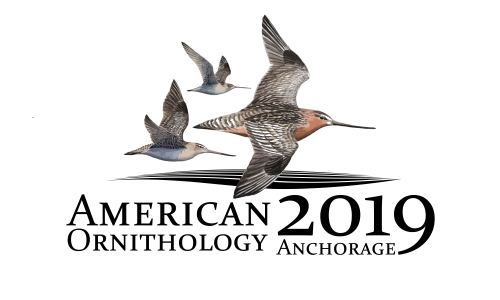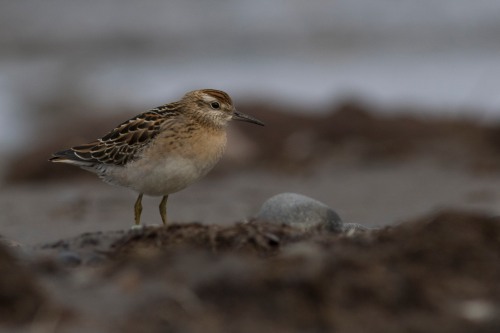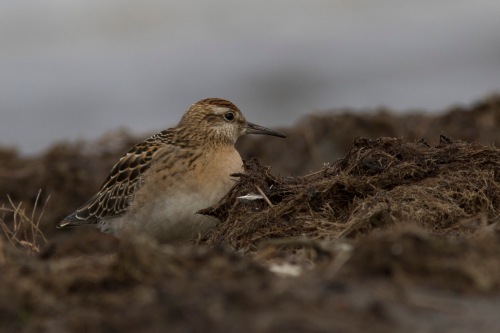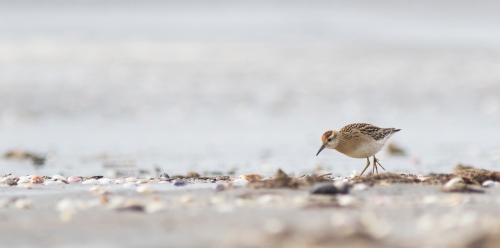American Ornithological Society Conference 2019 Logo
by Bryce W. Robinson

I am privileged to share the logo that I created for the American Ornithological Society’s 2019 conference. The logo features three Bar-tailed Godwit (Limosa lapponica baueri), a flagship bird for Alaska and a focal species for some of Alaska’s most influential ornithologists.
I worked closely with the conference planning chair, Colleen Handel of the USGS Alaska Science Center. We created a logo that ties in closely with the theme of the meeting – Birds on the Edge: Dynamic Boundaries. Colleen is part of a team of researchers headed by her husband, Robert E. Gill (also of USGS), that are responsible for discovering the incredible, sometimes 9 day non-stop flight of Alaska’s Bar-tailed Godwits as they return to Alaska from their wintering grounds in southeast Australia and New Zealand (see Gill et al. 2008). As such, one can see why the species is a great choice to celebrate the AOS meeting being held in Anchorage.
To register for the meeting or learn more, visit the AOS 2019 Conference website. Also, be sure to check out the merchandise that features this logo.





